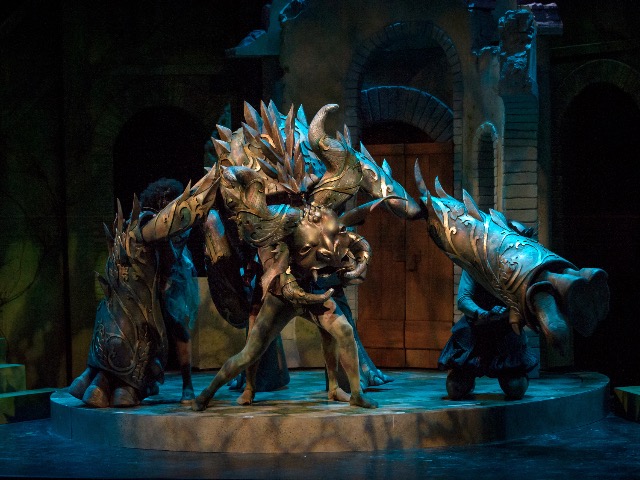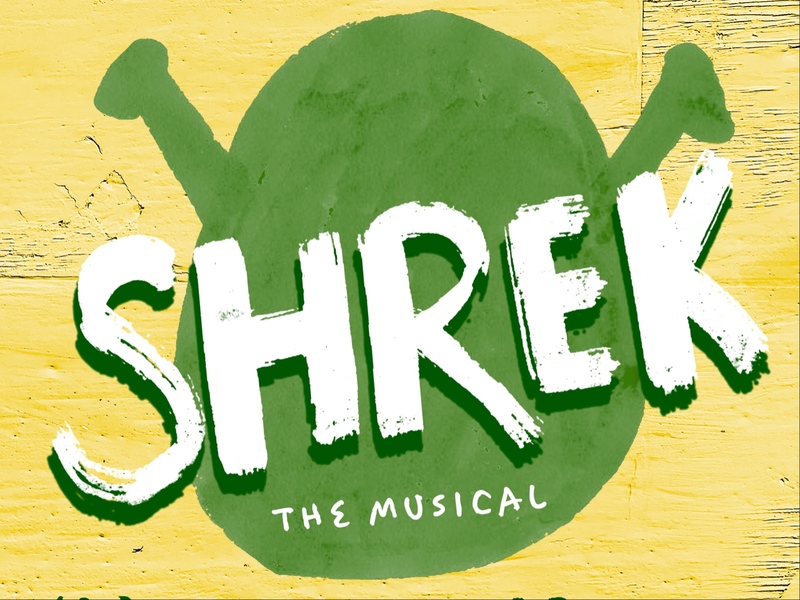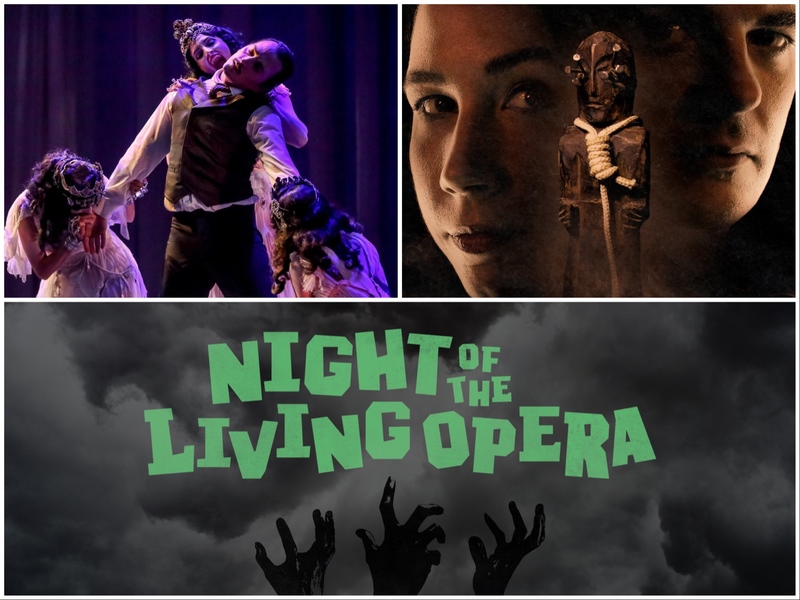This weekend, a reimagining of the timeless story of "Beauty and the Beast" – featuring a big, bold and new visual approach – will hit a theater by you. And also Disney has a new version of one of its animated classics coming to movie screens.
Indeed, in a case of impressive timing, the same weekend the Emma Watson-led live action adaptation hits cinemas, the Skylight Music Theatre opens its rendition of "Beauty and the Beast," premiering Friday night and running through March 26. And while the two share the same name, overall story – a romance between a beast and a kind-hearted beauty – and musical spirit, the Skylight’s opera goes much further back than Disney’s tale as old as time, bringing an rarely done 18th century retelling of Gabrielle-Suzanne Barbot de Villeneuve’s original, and infinitely darker, fairy tale.
"(The original story) is a little distressing," laughingly admitted James Ortiz, making his Skylight debut as the show’s director as well as scenic and puppet designer. "If we really unpack it, it’s about a father who sells his daughter to a monster, a monster who then doesn’t let her leave his house and every night goes ‘Will you marry me?’ until she says yes."
In case that grim, problematic description wasn’t enough, the Beast in the original story, according to Ortiz, is a borderline suicidal character. So how does one transform a beautiful tale of love out of a story dripping in Stockholm syndrome without going full Disney?
"When I read this adaptation, they managed to maintain a lot of the things that ground the story – some of that darkness – but the whole thing has this effervescence, and it’s quite classical," Ortiz noted. "It manages to have the flavor of that, but it was largely gilded and bright. There’s a lot of comedy in it, which was really exciting. It feels more like a Shakespeare bawdy; there’s a drinking song in the middle of it, and you’re like, ‘Great!’"
Working with music director Shari Rhoads, Ortiz also wrote a new libretto for the "Beauty and the Beast" adaptation, guiding the plot’s emotional throughline and adapting the humor of the original French to today’s times to help make it as modern as it seemed at the time.
"The opera originally called for a ballet; there’s moments in the middle of the show where there’s just dance breaks, which is pretty ahead of its time for when it was written," Ortiz said. "It’s also an opera with a fair amount of dialogue, so this was really a proto-musical. It was on its way to becoming the modern musical."
The smart reworking and look toward the future weren’t the only elements in this "Beauty and the Beast" adaptation – supposedly one of young Mozart’s favorite operas, with its influence found in some of his early work – that caught Ortiz’s eye when he was first approached the show a year ago. There was also its star: a puppet playing the role of the Beast.

Coming hot off the critically acclaimed Off-Broadway show "The Woodsman" – which nabbed him a 2016 OBIE Award for puppet design – Ortiz wasn’t sure he wanted to dive straight into another fantasy tale featuring puppets. However, he was won over by his appreciation for the opera as well as his own personal mission for the art of theatrical puppetry.
"Often times, puppetry is used as an effect or sometimes as a trick," he said. "I loved ‘War Horse,’ and I love ‘Avenue Q,’ and those are all extraordinary shows, but often times, it’s about the puppetry as a gag or a spectacle. For a while now, I’ve been considering it sort of the CG of theater. It can be anything; we can Andy Serkis it in any way we want. Can we have a puppet be a dynamic, complicated, layered character? Can that work, and will an audience believe that? And I think the answer is yeah."
He’s going all in on that thesis with "Beauty and the Beast," devising a five-person puppet that lives up to the term "beast," a gorilla-esque being standing about eight feet tall and consuming the stage when he appears. Two people operate him from the inside, and two people guide him from the outside, creating a big monster with the ability to make small, nuanced movements – all while the fifth member of the character, Chaz’men Williams-Ali, provides his voice.
"As you can imagine, it’s a tricky process," Ortiz said. "Incorporating a puppet at all, it requires a lot more time and effort."
To do so, Ortiz brought all the actors behind Azor the beast, and before working with the puppet itself, they broke down the scenes into his character beats.
"The great thing was five people had varying – in the best way – opinions of what that moment was," he explained. "So that was a great time for everybody to get on the same page with each other, saying ‘That’s an even better idea than I had’ or being inspired by someone else’s interpretation.
"Puppetry, I find, is another tool for actors to act with. Mask work, maskeup, clown work – very similar things. So it’s more about making sure we all know what the scene is about, make sure we all know what the layers are about, make sure we all know what the givens are and then just treat it like scene work – and then let the technical stuff figure itself out as we work together."
As that process went on, Ortiz noted that he was soon able to talk to all of the actors behind Azor as though they were one actor. Meanwhile, the actors joined together to use their synchronized breaths to communicate actions large and small to one another. In the end, not only did all of their work help make the puppet feel more lifelike rather than a sculpture but it also helped engage the other performers working against their massive, monstrous co-star.
"An actor’s function is to believably live in imagined circumstances, and the imagined circumstance is that (beast puppet) is real," Ortiz laughed. "So I think it’s actually easier for them. There were a couple of times in rehearsal where they were genuinely scared of the beast, which was sort of funny to watch. It was like, ‘Why are they making that noise? We didn’t talk … oh, that was just them!’"
It’s that kind of logic-defying, wonder-inducing reaction that Ortiz and Skylight hope to get from audiences as well with their rendition of "Beauty and the Beast" – no Disney magic need apply.
"In other types of puppetry and things like this, often times the operators are in black or they’re trying to hide them," Ortiz said, "but I always find it more magical and more dynamic when the audience has a choice to look at them or not.
"The whole play is about how love is magic, so there’s a lot of magic in the show."
As much as it is a gigantic cliché to say that one has always had a passion for film, Matt Mueller has always had a passion for film. Whether it was bringing in the latest movie reviews for his first grade show-and-tell or writing film reviews for the St. Norbert College Times as a high school student, Matt is way too obsessed with movies for his own good.
When he's not writing about the latest blockbuster or talking much too glowingly about "Piranha 3D," Matt can probably be found watching literally any sport (minus cricket) or working at - get this - a local movie theater. Or watching a movie. Yeah, he's probably watching a movie.







